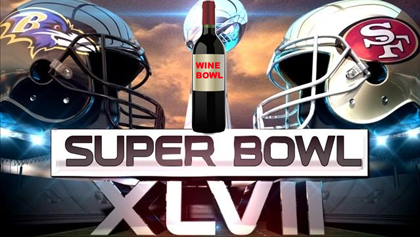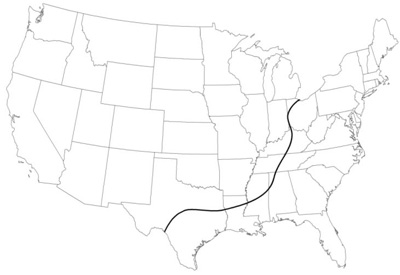Dr Vino's wine blog
wine talk that goes down easy
The Super Bowl drinks score? Beer 42 – Wine 32
It was just an aside from the podium during Danny Brager’s talk on the state of the wine industry. But the Nielsen wine guru said that wine is closing in on beer among viewers of the Super Bowl. According to their polling, 71% of viewers will have carbonated beverages (aka soda), 42% of viewers will have beer, 35% will have bottled water, 32% will have wine, and 22% will have spirits. I’m not a math whizz, but I think that adds up to a whole lot of bathroom breaks!
The survey info came out yesterday and included information on food consumed during the Super Bowl. As you might expect, it included many of our “impossible food-wine pairings.” So, from the archives, here they are:
* Chips and Salsa
* Buffalo wings
* Seven-layer dip
* Pizza
Bonus: “Betting wine for football”
Bonus bonus: “How and why did light beer come to be the choice of NFL viewers?”
Scottish wine, NY lobbying, tree planting, OWC – sipped and spit
SIPPED: Scottish wine?
French chefs have urged President Sarkozy to seal a deal at the Copenhagen climate change talks this fall–or risk ceding some the world’s prime vineyard sites to…Scotland! [independent.ie]
SIPPED: lobbying
The Village Voice looks at the jockeying behind the legislative initiative to allow supermarkets to sell wine.
SIPPED and SPIT: growth (of the viticultural kind)
The AP offers more reporting on the coming harvest “under economic cloud.”
SIPPED: a second life for those OWCs
Wine crates as serving trays.
SIPPED: tree planting
An Australian winery will attempt to offset its carbon emissions by planting up to 10,000 trees worldwide. Let’s hope the trees fare better than those planted for Coldplay! [Perth Now]
SPIT: a tip of the hat
In the recent double issue, NY mag ran a long piece about ethical eating that included a mention of the carbon footprint of wine. Ditto Newsweek in their current double issue.
SPIT: bottled water
Mother Jones has a long article on the making of FIJI bottled water.
Box wine: responses to your comments on Drink Outside the Box
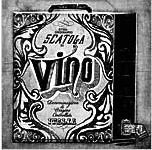 Thanks so much for the reactions to my op-ed, “Drink Outside the Box,” in Monday’s NYT. The interest astonishingly drove it to the #1 most emailed story on nytimes.com! (And then some guy named Mikhail Gorbachev came along and knocked me off the list.) With the interest has also come reactions and I thought a post was in order to respond to some of the many important issues you raised both on the previous posting on this site as well as in the comments section on the Times’ site.
Thanks so much for the reactions to my op-ed, “Drink Outside the Box,” in Monday’s NYT. The interest astonishingly drove it to the #1 most emailed story on nytimes.com! (And then some guy named Mikhail Gorbachev came along and knocked me off the list.) With the interest has also come reactions and I thought a post was in order to respond to some of the many important issues you raised both on the previous posting on this site as well as in the comments section on the Times’ site.
One point I’d like to underscore is that by far the majority wines in the US are consumed, oh, about an hour after purchase. There’s a joke in the wine trade that we Americans do have wine cellars–they’re called the back seat of the car.
Another important point is about freshness. Wine bottled with cork closure can be with oxidized or, worse, plagued by TCA, also known as cork taint, which afflicts annoyingly high percentage of wines–nobody knows for sure, but one bottle per case is certainly a plausible guess. Do you really want to donate eight percent of your wine budget to spoiled wines gods? For box wine, this is not an issue since there is no cork.
Finally, I’m really excited that nine out of every ten respondents in the poll say they would try good wine in a box. I think wine consumers–or a strong subset of consumers–are really ahead of the trade on this issue. With good wine, box wine’s longtime stigma can be used as a counter-culture sign of hipsters!
Okay, let’s roll with your questions and comments about recycling, aesthetics, wine picks, and more!
How is putting wine in a plastic bag with a plastic spigot more environmentally friendly than using recyclable glass?
— GG, Minnesota Read more…
In the NYT suggesting to drink inside the box
 I am an op-ed contributor to the New York Times today urging wine producers to upgrade the quality of wine available in boxes. If you’re new to the site, welcome and feel free to explore the site including wine picks. Also, consider subscribing to the site feed or get caught up on my joint research on the carbon footprint of wine.
I am an op-ed contributor to the New York Times today urging wine producers to upgrade the quality of wine available in boxes. If you’re new to the site, welcome and feel free to explore the site including wine picks. Also, consider subscribing to the site feed or get caught up on my joint research on the carbon footprint of wine.
Overall, I’m disappointed with the quality of box wine here in the U.S. But the time for good box wine has come for environmental as well as economic reasons as I argue in the piece.
There are some rays of hope in the box wine landscape. Unfortunately, the $40, 3-liter D-Tour wine, made by Dominique Lafon of Burgundy and imported by Daniel Johnnes, wine director at Daniel Boulud’s restaurants, has been temporarily withdrawn from the market (search for this wine). However, the Cuvee de Pena, an old vine grenache from the French side of the Pyrenees, is still available (find this wine). And the newest and brightest star is the $11 unoaked, organically grown malbec called Yellow + Blue sold in a 1-liter TetraPak (not bag-in-box; find this wine). There’s also the Bandit from California (find this wine).
So what do you say about boxed wine? Have your say in the latest poll! And hit the comments with your preferred box selections.
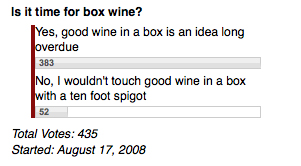
poll now closed
Related: “Drink outside the box” NYT
“An open letter to Jorge Ordonez” [Dr. V]
“How I gave up bottled water and lived to tell the tale” [Dr. V]
Drinking box rosé in the south of France
The excellent image is by Grady McFerrin and ran with the story.
Foie gras, corks, critters, seasons, Brunello – sipped and spit
 SIPPED: Sauternes
SIPPED: Sauternes
Chicago’s foie gras ban has been repealed in a 37 – 6 vote by the City Council, overturning the 48 – 1 vote that put the ban into effect two years ago. The prices of Sauternes, the unctuous sweet wine often served as an accompaniment, just went up an additional ten percent. [Sun Times, thanks Stephen!]
SIPPED: Cork back for an encork
When a member of the Culinary Institute of American saw my cork iPhone case in February, she exclaimed that it would be the perfect product for recycling their corks! But apparently someone had other plans as the 900 corks pulled there a day will now be recycled in a new program called ReCORK America, sponsored by a cork producer to underscore the “natural” qualities of cork. But what is the carbon footprint of sending all that cork into be recycled into floor tile (and sidebars for wine blogs). Wouldn’t the CIA be better reusing them as festive holiday wreaths–or those iPhone covers?!?
SPIT: Critter labels
On the heels of our worst wine label contest comes more advice, this time from Wines & Vines. One item: a label designer Down Under has a “no critters” policy after seeing the kangaroo reinvented some “50,000 times.” [Wines & Vines] Related: ”
SPIT: Brunello di Montalcino
Not content with the FAA’s Global War On Toiletries, US federal authorities are now turning their eyes on another liquid: Brunello di Montalcino! A recent scandal has revealed blending of grapes other than sangiovese, the only one permissible under the local DOC rules in the wine. Now, as a result, the feds are threatening to block US imports of the pricey Italian wine as of June 9. “Part of our mandate is to make sure all labels are truthful, accurate and not misleading to the American consumer,’’ Mr. Resnick of the US Alcohol and Tobacco Tax and Trade Bureau told Eric Asimov. Um, OK, how about starting with Korbel “California Champagne”? [NYT]
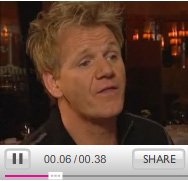 SPIT: asparagus in December
SPIT: asparagus in December
In a piece that, oddly, has not received much attention here in the US of A, celebrity chef Gordon Ramsay–known for his high-end restaurants in several countries as well as cursing like, well, a chef–lays into out-of season like nobody’s bidness calling for it to be outlawed in the UK. While absolutely laudable in principal, the legislative angle may be the wrong way to achieve this policy goal. And let’s hope eating local in his case doesn’t mean eating any more horse! [BBC]
SIPPED: Wine into water
Wine & Spirits magazine will be holding two public tastings in Los Angeles and Seattle that sound like fun with good people and good wines. Since I gave up bottled water for thirty days and lived to tell the tale, I like the secondary cause too: $5 of each ticket will go to local water conservation organizations. [Wine & Spirits Hotpicks]
(image 1)
Meadowood: A hotel mini-bar that’s worth uncorking
While you may not be able to touch Wynn’s nuts in Las Vegas, the Meadowood resort in Napa encourages you to pull the corks on the wine in the room.
Even though I wondered briefly which wine goes with Kettle chips, I managed to make it through my stay for a wine writers’ conference last week without opening a bottle in my room. But I was tempted since the wines were some top examples of local offerings at incredible prices. Consider the Joseph Phelps Insignia 2001 for $145 in the room when it can’t be found for less than $130 in a store (find this wine), if at all! While they are not all steals (the Sinskey Carneros Pinot Noir was $55 in room compared to $25 in a store) there were other, lower priced wines too: Plumpjack Chardonnay for $65 in room and about $50 in a store (find this wine) and the sparkling Schramsberg blanc de blanc is $35 in the room and about $25 in a store (find this wine). And free in-room wi-fi to run your own price check!
I asked the affable Gilles de Chambure, Master Sommelier and Director of Wine Education at Meadowood about the pricing and quality of the wine in the rooms, he said “we want people to pull the corks.” Indeed!
One negative about the beverages at Meadowood, however, was the abundant pouring in the dining room of one-liter glass bottles of Acqua Panna, a water imported from Tuscany. With bottled water available from five miles away in Calistoga I was tempted to break out my carbon calculator…
My beef with Georges Duboeuf: Beaujolais nouveau
“Korea’s Airlines Enjoying Lots of Wine” read a recent headline in the English Chosun. Really, now, do you want the airlines to be enjoying wine? I’d prefer to see you lending your wine’s enjoyment to ships.
Beaujolais nouveau is airdropped on the world the third Thursday of November. I would submit to you that the carbon cost of air freight is only worthy for a short list wines, and one that was harvested just a few weeks prior is not on it.
Sorry to rain on your Beaujolais nouveau parade. I’ve never been much of a fan of the wine from a taste perspective. But at 12% alcohol, it’s an innocuous enough gateway wine. I really do enjoy the gamay grape and cru Beaujolais–that’s a great way to get your Bojo working.
For consumers who enjoy the nouveau, I suggest leaving it behind this Year of the Falling Dollar and getting to know the differences between a Fleurie and a Morgon, both from the same grape and general area but world’s apart in terms of quality. Basically anything from 2005 works; here’s a run down of some crus with my seal of approval. Many of the wines, bought a year or so ago by importers and stores, are just a few dollars more than what the 07 nouveau will be.
With my earlier bottled water ban and recent calculations of the carbon footprint of wine, I must make this year a Bojo No-vo. Stick it on a ship, use lighter packaging and we’ll see about 2008.
Sincerely,
Dr. Vino
Calculating the carbon footprint of wine: my research findings
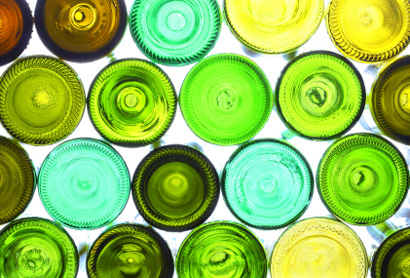
Is that a whiff of raspberries and leather you get from that red wine–or a whiff of petroleum? With some premium wines consuming three times their weight in petroleum, don’t be surprised if it is the latter.
My previous postings on the carbon footprint of wine made me want to determine just how much carbon is involved in the making and transporting of our favorite beverage. So I collaborated with Pablo Paster, a sustainability metrics specialist, and we ran the numbers. Our findings have just been published as a working paper for the American Association of Wine Economists, available here as a pdf.
While I welcome your comments on the whole paper, I’ll post some of the key findings here:
* Organic farming has lower greenhouse gas (GHG) intensity than conventional farming but I was surprised that the difference wasn’t greater. Clearly there may be other differences in a local ecosystem but the GHG difference was surprisingly small. But on the whole, it was the transportation that played a more significant role from a GHG perspective.
* Regarding the “food miles” debate, we find that distance does matter.
* But not all miles that a bottle travels are the same. Efficiencies in transportation make container ships better than trucks, which in turn are better than planes.
* Shipping premium wine, bottled at the winery, around the world mostly involves shipping glass with some wine in it. In this regard, drinking wine from a magnum is the more carbon-friendly choice since the glass-to-wine ratio is less. Half-bottles, by contrast, worsen the ratio.
* Shipping wine in bulk from the source and bottling closer to the point of consumption lowers carbon intensity.
* Light packaging material such as Tetra-Pak or bag-in-a-box has much less carbon intensity.
* Using oak chips is a more carbon friendly alternative than oak barrels, particularly those that are shipped assembled and empty around the world
* There’s a “green line” that runs down the middle of Ohio. For points to the West of that line, it is more carbon efficient to consume wine trucked from California. To the East of that line, it’s more efficient to consume the same sized bottle of wine from Bordeaux, which has had benefited from the efficiencies of container shipping, followed by a shorter truck trip. In the event that a carbon tax were ever imposed, it would thus have a decidedly un-nationalistic impact.
What does this mean for the green wine consumer? Drinking a wine made without agrichemicals, from larger format bottles, or wine that has traveled fewer miles is the more “green” option. Beyond these points (or in addition to them), you could perform your own carbon offsets, for example, by giving up one bottle for another and saying no to bottled water.
“Red, White and “Green”: The Cost of Carbon In the Global Wine Trade,” By Tyler Colman and Pablo Paster
UODATE: This paper was been published in the March 2009 issue of the Journal of Wine Research
image 1: istockphoto.com
